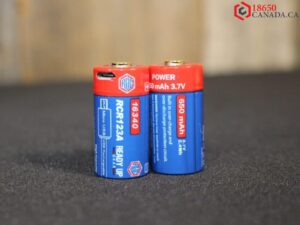18650 batteries are a type of rechargeable lithium-ion battery that has a cylindrical shape and measure 18mm in diameter and 65mm in length. They are widely used in electric vehicles and other applications that require high power and long run time.
However, 18650 batteries also need proper storage and maintenance to ensure their optimal performance and safety. Improper storage and maintenance can cause 18650 batteries to lose capacity, and efficiency, or even catch fire. In this article, we will show you how to store and maintain your 18650 batteries safely and effectively.
Factors that Affect the Storage and Maintenance of 18650 Batteries
There are several factors that affect the storage and maintenance of 18650 batteries, such as temperature, state of charge, voltage, humidity, dust, and corrosive gas. These factors can influence the chemical reactions, physical structure, and electrical properties of 18650 batteries, which can result in capacity loss, efficiency reduction, internal damage, or fire risk. Therefore, it is important to keep these factors within the optimal conditions and ranges for 18650 batteries.

• Temperature:
Temperature is one of the most critical factors for 18650 batteries, as it affects the rate of chemical reactions and the stability of the materials inside the battery. High temperatures can accelerate the degradation of the electrolyte and the electrodes, which can reduce the capacity and lifespan of the battery.
Low temperatures can slow down the chemical reactions and increase the internal resistance of the battery, which can reduce the power output and efficiency of the battery. According to the manufacturer’s specifications, the recommended storage temperature for 18650 batteries is between 0°C to 30°C (32°F to 86°F), while the recommended maintenance charge temperature is between 0°C to 45°C (32°F to 113°F).
• State-of-Charge:
State-of-charge (SOC) is the percentage of charge remaining in a battery compared to its full capacity. The SOC of a battery affects its voltage level and its susceptibility to degradation. High SOC can increase the voltage level and the stress on the battery, which can cause irreversible damage to the electrodes and electrolytes.
Low SOC can decrease the voltage level and the stability of the battery, which can cause irreversible damage to the separator and electrolyte. According to manufacturer specifications, the recommended storage SOC for 18650 batteries is between 50% to 60%, while the recommended maintenance charge SOC is between 80% to 100%.
• Voltage:
Voltage is the difference in electric potential between the positive and negative terminals of a battery. The voltage of a battery depends on its SOC, temperature, discharge rate, and age. The voltage of a battery affects its performance and safety. High voltage can increase the power output and efficiency of the battery but also increase
• Humidity:
Humidity is the amount of water vapor in the air. Humidity affects the moisture level inside the battery, which can affect its chemical reactions and physical structure. High humidity can increase the moisture level inside the battery, which can cause corrosion or leakage of the electrodes and electrolytes.
Low humidity can decrease the moisture level inside the battery, which can cause cracking or drying of the electrodes and electrolytes. According to manufacturer specifications, the recommended storage humidity for 18650 batteries is between 45% to 75%, while the recommended maintenance charge humidity is between 45% to 85%.
• Dust:
Dust is any fine particles of solid matter that are suspended in the air or settled on surfaces. Dust affects the cleanliness and conductivity of the terminals and contacts of a battery, which can affect its electrical properties and safety. Dust can accumulate on the terminals and contacts of a battery, which can cause resistance or short-circuiting. Dust can also enter into the vents or seals of a battery.
Final Thoughts
Properly storing and maintaining your 18650 batteries is vital for their longevity and safety. By following essential guidelines, you can maximize battery lifespan and performance. Store them in a cool, dry place, away from direct sunlight and extreme temperatures. Use dedicated battery cases or holders to prevent damage and short circuits.
Regularly inspect batteries for wear or damage and replace as needed. When storing for extended periods, maintain a moderate charge level, avoiding overcharging or deep discharging. Always refer to the manufacturer’s instructions for specific care guidelines. By adopting these measures, you can ensure the extended life and safe usage of your 18650 batteries.

